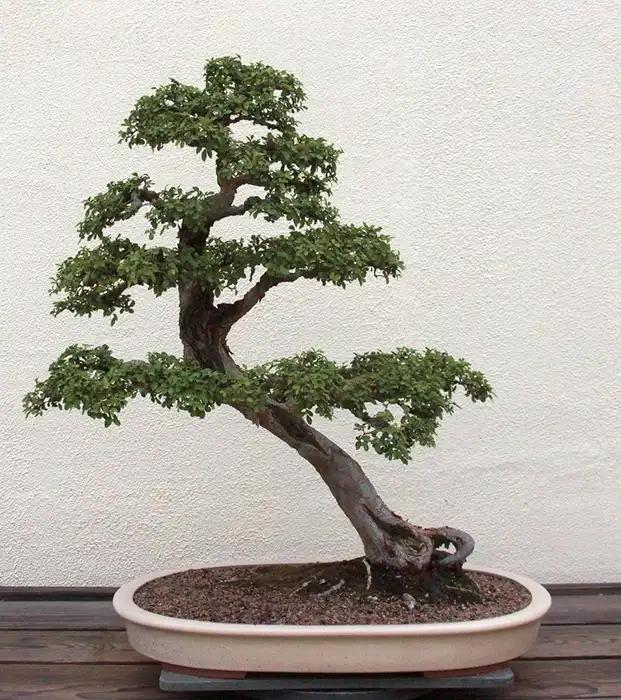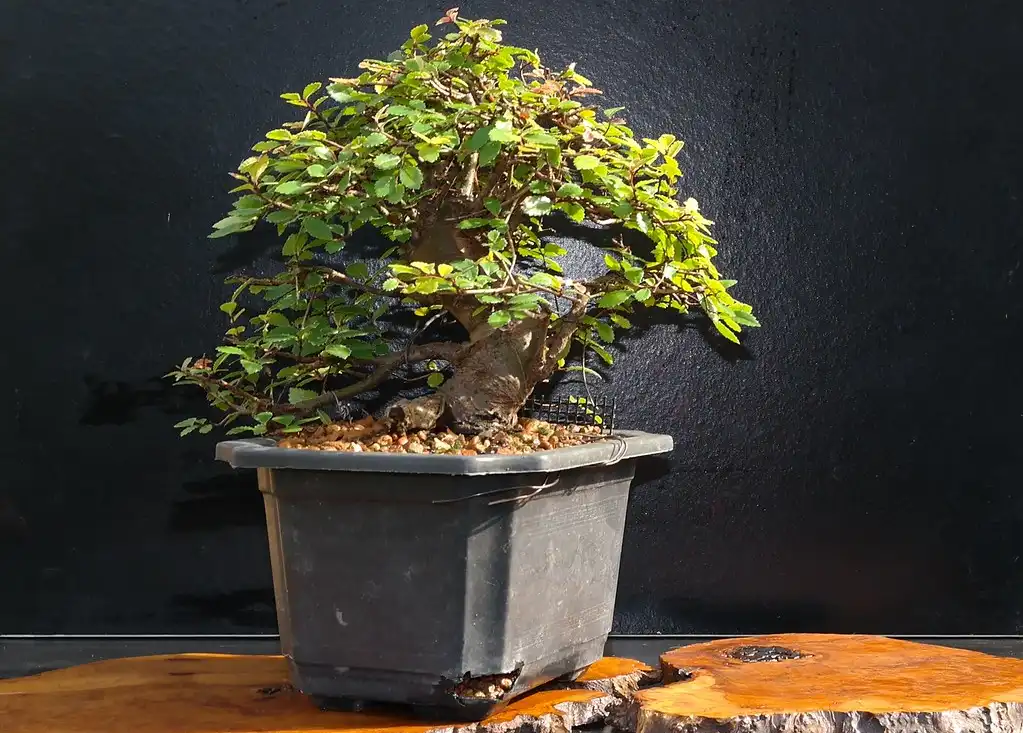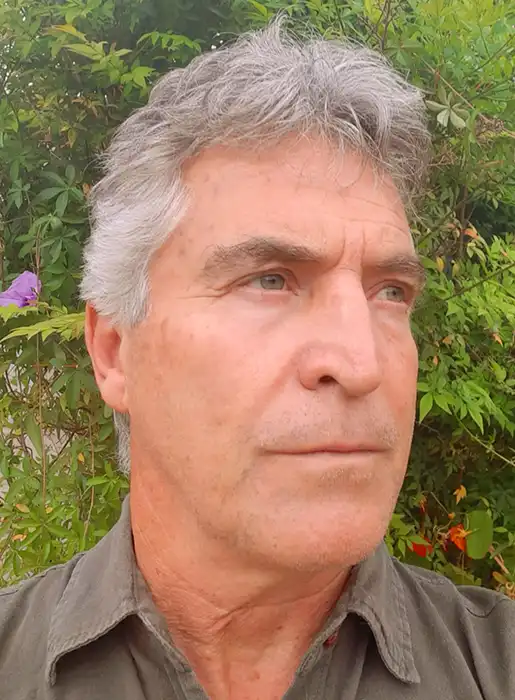How to Air Layer a Chinese Elm
So you found yourself a Chinese Elm that has a nice thick trunk, but the proportion of the Elm is not correct. It may be standing 6 feet tall, but there is nice growth with side branches and leaves forming a canopy at the bottom of the trunk. Potentially this can make for a beautiful Bonsai tree. You can cut the trunk off with a saw at the desired height, plant the bottom part in a bonsai pot, and start training your bonsai.
You can also try and rescue the top half by putting it in the ground and hoping for the best. My experience is that with some trees, it might work, but the ratio of success is so small. The other option to save the top half with great success is to Air Layer the Chinese Elm.

What is Air Layering?
Air Layering is a technique used quite frequently by Bonsai tree hobbyists. It is a technique whereby trees are forced to form new roots at a certain point on the parent plant. You take the trunk where you would normally cut it off, and you trim off part of the bark. In doing this, you stop the nutrients from going from the leaves to the roots. New roots will then sprout on the top half of the trimmed area.
You cut the tree through just under the newly formed roots. The top section with the new roots can now be planted, and you would have two trees. This procedure can be repeated, and you can have multiple trees from the original parent tree. The best time for Air Layering is the beginning of spring.
How Can Air Layering Benefit a Bonsai Tree?
Air Layering can be used in many ways to enhance the quality of a Bonsai tree:
- A trunk that is too long can be shortened.
- A new bonsai plant can be made from the parent plant.
- When the Bonsai tree has a bad root base, meaning all the roots are on one side, it can be altered.
- If the shape of the trunk tapers to the roots or is bulbous, it can be repaired using the Air Layering techniques.
What Tools and Accessories do you Require?
You would need the following basic tools and accessories to do air layering. You would need Copper wire and Binding pliers for the Tourniquet method. The thicker the trunk or branch, the thicker the wire required. You need all of the following tools for all the techniques:
- A sharp knife or wood chisel to cut the two circles, clean the bark, and scrape the hardwood
- Transparent plastic sheeting and a roll of transparent wrapping plastic used for sandwiches, etc.
- Insulation tape, string, or wire-ties to bind plastic sheets to the trunk.
- Small paintbrush.
- Rooting powder.
- Container filled with water.
- Moss, any kind will do. Sphagnum Moss gives quicker results but is more expensive.

Image courtesy of Albert Herring | License
Different Air Layering Techniques
There are three different Air Layering techniques you can use.
- The Tourniquet Technique: With the Tourniquet Method, you tie copper wire tightly around the trunk or branch where you want the roots to form. The wire is blocking the Phloem from going down to the roots. It is the better option when working with slow-growing trees. It takes longer for the new roots to grow just above the wire. Good for Pines and Azaleas, but you can also use this method for Chinese Elms. Once you have tightened the wire to cut deep into the bark, You cover it with plastic sheeting and cover it with moss. Follow the steps as for the ring technique.
- The Ring Technique: Here, you make two parallel cuts into the tree’s bark at the point where you decided the trunk or branch will be cut off. You then cut away all the bark between the two cuts and scrape away the soft Phloem to expose the hardwood. This is done so that the nutrients, like sugars and starch manufactured by the leaves, can’t be transported from the leaves to the roots. This cut area is covered with moss and plastic to activate the growth of new roots. See all the steps to follow below. This technique works better on faster-growing trees but is excellent for Chinese elms.
- The Slit Technique: A long slit is made in the branch or stem and wedged open. It is then wrapped in sphagnum moss and plastic as per the steps below. This technique works well with big trees, but it is not the best technique for Bonsai trees because of the uneven root system that forms. It is a great option so that when a branch breaks, for whatever reason, you’re still able to use that part as a new tree.
Step By Step Air Layering a Chinese Elm Bonsai Using the Ring Method
Both the tourniquet and ring techniques are good for Chinese Elms. The steps below are for the ring method. If you follow these steps and are patient, you can have two or even more beautiful Chinese Elm bonsai trees.
- It is important first to take the Elm tree and turn it so you can decide what side would be the front. Turn it a few times, imagining what it will look like if you cut some branches off.
- Once you ascertain what part of the tree you like, you cut a two-inch strip into the bark of the trunk with a very sharp knife. This is the area of the trunk you would like new roots to grow from. Or, in this case, also the part of the trunk that you want to remove.
- Remove all the bark in this two-inch strip. Once this is done, scrape the hardwood with the blade to remove all the Phloem. The Phloem is the vehicle for nutrients to move from the leaves to the roots. Removing this will send signals to the tree that it is under stress and will prompt new root growth to keep itself alive.
- Better results are achieved if you take care to trim the top part of the bark where the hardwood is exposed. This trimming must be clean and neat and also with a slight angle.
- Use the paintbrush and brush rooting powder into the top cut. The slight angle will keep the rooting powder stuck between the bark and hardwood.
- Put some moss into a container filled with water. Any moss will work. Sphagnum moss does have greater and quicker results but is more expensive.
- Fold a clear plastic sheet around the tree and fasten a few inches below the open strips, using insulation tape or string. Fill the bag you formed around the trunk with drained moss. Make sure there is enough moss covering all of the hardwood. Tie the top of the plastic with Insulation tape or string.
- Use a roll of wrapping plastic to wrap the plastic sheet filled with moss as tight as you can to the trunk.
- Punch a few small holes at the bottom as you don’t want the roots to rot.
- Punch a small hole in the top so you can water the moss when it dries out.
- Put the tree in an area with lots of light, but not direct sun.
- After eight to ten weeks, you can check if the roots are forming against the transparent plastic outside.
- Once you can see many roots formed, you can cut the trunk as close to the new roots as possible.
- Remove the plastic slowly, taking care not to damage the newly formed roots.
- Do not remove any moss, and do not disturb the roots.
- Plant the freshly cut tree in a container filled with moss and not your normal potting mix.
- Remove most of the leaves. It is important to leave a few leaves so they can still transport nutrients to the roots. Too many leaves will put too much stress on the new roots.
- Be patient. Although you can transfer the tree to a container after six months, it is highly recommended to leave it until the next spring to re-pot and start training.

Image courtesy of Jerry Norbury | License
Conclusion
The Air Layering Technique is an excellent way to increase your bonsai tree stock without having to buy new trees. It is a great technique to beautify existing bonsai as well. Sometimes, as time passes, a tree would scream out for a style change. This is a technique used to make dramatic changes to the tree’s shape and still have a mini-me to play with. Two for the price of one! The art of bonsai is long-term. To improve your skill in the art of bonsai, you must not look at what your tree will look like tomorrow but be able to see in your mind’s eye what that tree will look like in 20 or even 50 years.







